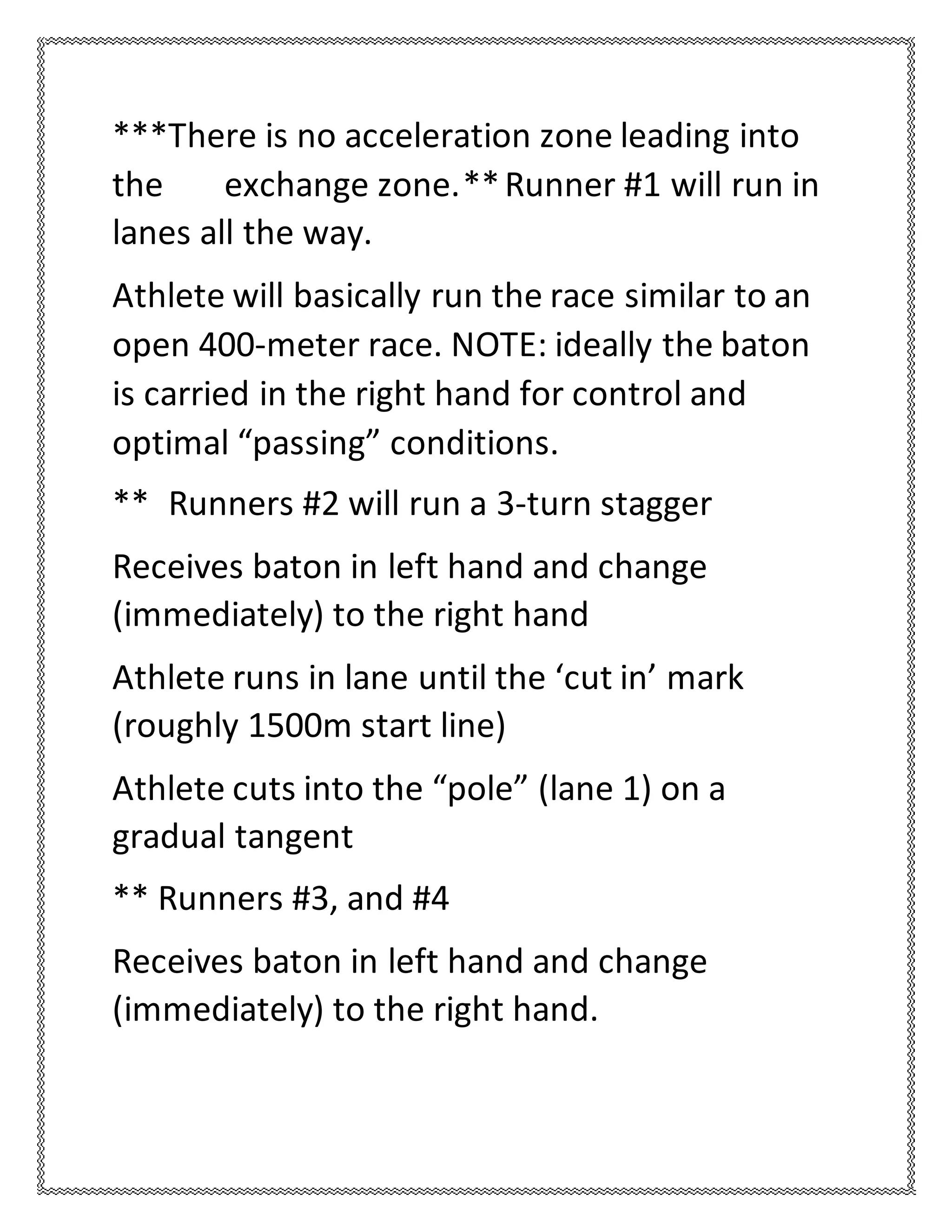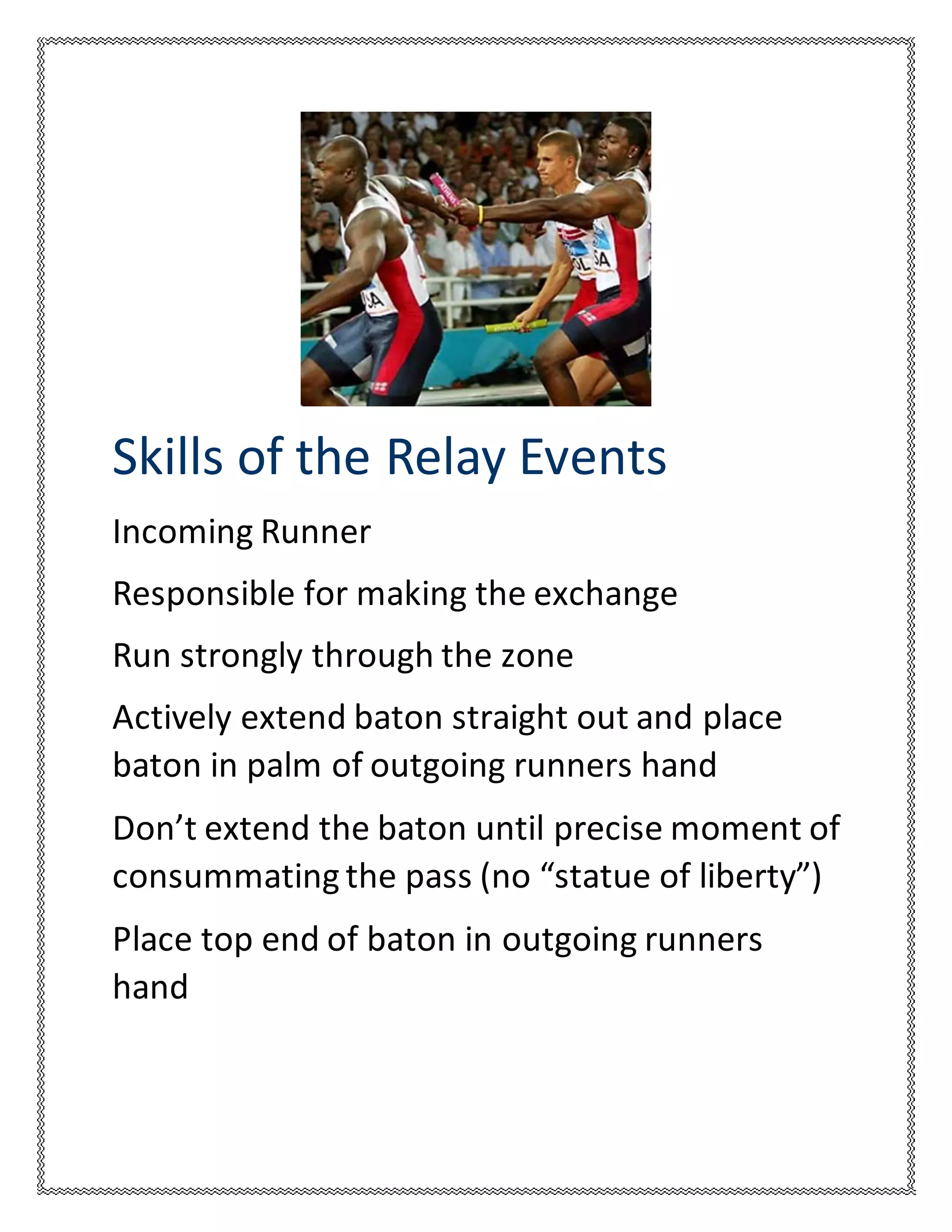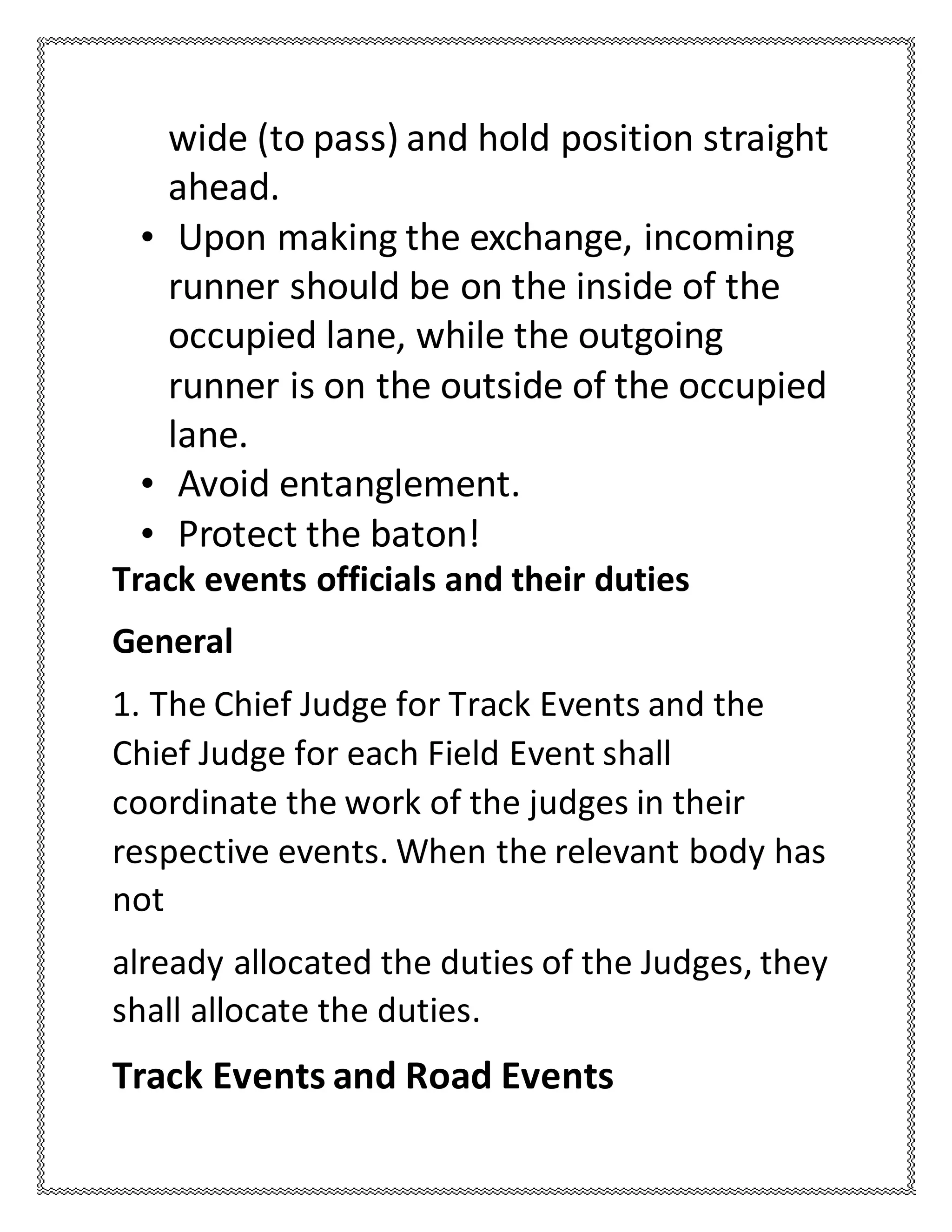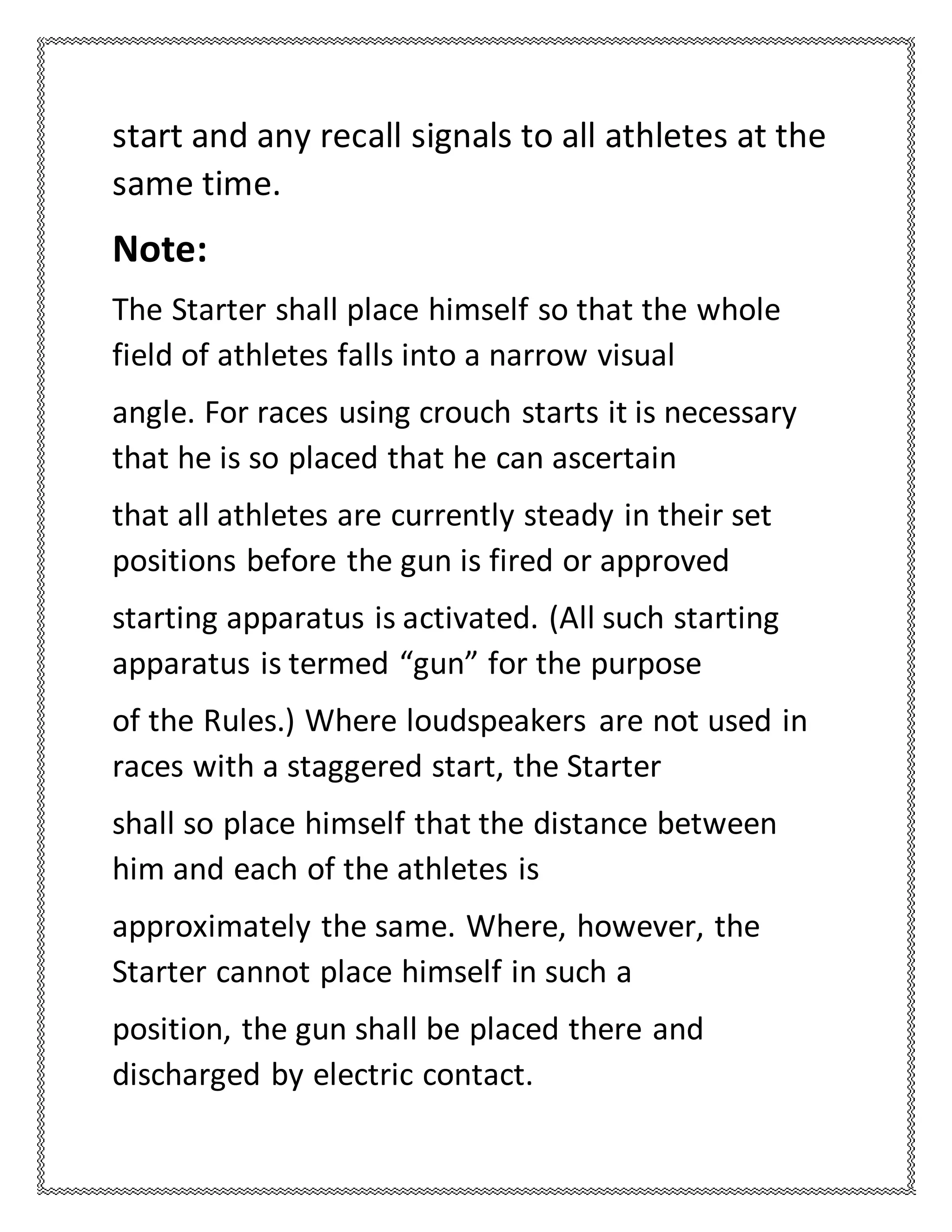This document provides information about relay races, including the rules and roles of officials. It discusses the types of relay races (4x100m and 4x400m), how they are run, and the skills and tactics of the runners. It also outlines the duties of key officials in track and field events like judges, umpires, timekeepers, starters, and photo finish judges. Their roles include observing the competition, making decisions on finishes, reporting any violations, and overseeing the start and timing of races.

![Introductionrelay races.
A relay race is a track and field event in which
athletes run a pre-set distance carrying a baton
before passing it onto the next runner. Often, a
relay team is a team of four sprinters.
What is a relay race?
A relay race is a track and field event in which
athletes run a pre-set distance carrying a baton
before passing it onto the next runner. Often, a
relay team is a team of four sprinters. In athletics,
the two standard relays are the 4x100 meter relay
and the 4x400 meter relay.
Types of relay races
[1] 4 ×400m
[2] 4×100m](https://image.slidesharecdn.com/assignmentrelayraces-181120104218/75/relay-races-sports-2-2048.jpg)























